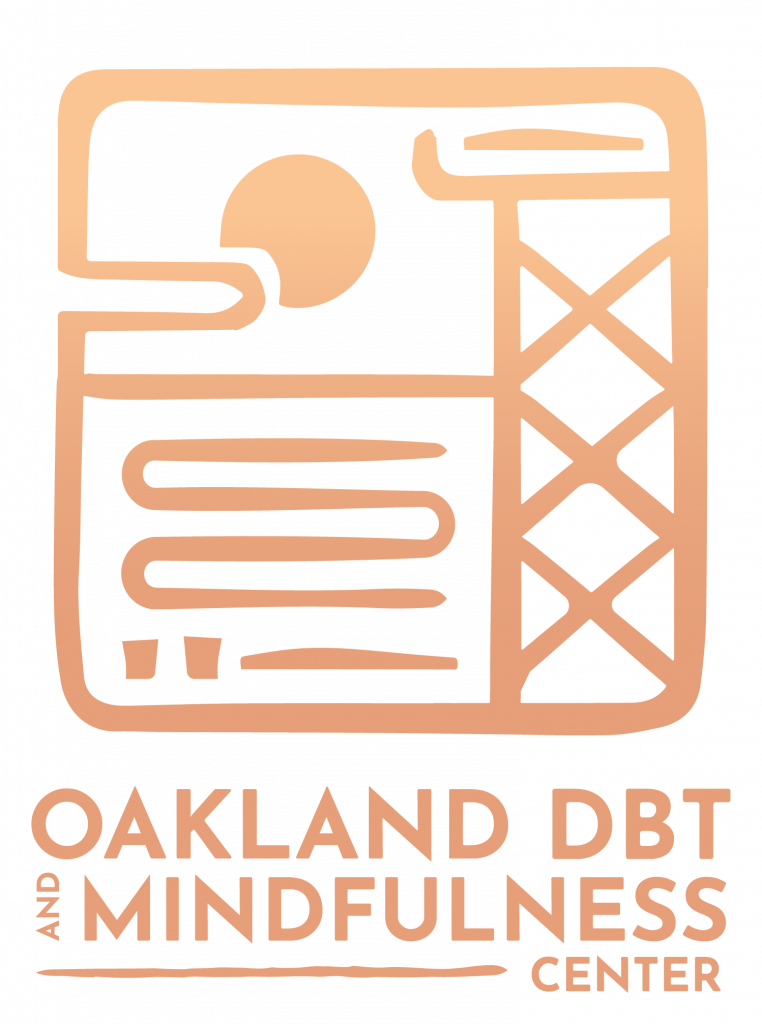If you’ve ever felt like your emotions are too big to handle, or that your reactions often make life more complicated instead of easier, you’re not alone. Many people struggle with overwhelming feelings, self-criticism, and cycles of behavior that leave them feeling stuck. One evidence-based treatment that has helped countless individuals find balance is Dialectical Behavior Therapy (DBT). So, what is DBT Therapy? At its core, it is a structured, skills-based approach that combines mindfulness, behavioral strategies, and compassionate support to help individuals regulate their emotions, enhance relationships, and cultivate a life that feels worth living.
In this guide, we’ll dive deep into the principles of DBT, explore how it works in practice, examine the skills it teaches, and discuss why it has become one of the most trusted forms of therapy for emotional regulation and resilience. Whether you’re considering DBT for yourself, a loved one, or want to understand the approach better, you’ll find practical insights, clear explanations, and answers to common questions here.
Understanding Dialectical Behavior Therapy
Origins of DBT
DBT was developed in the late 1980s by psychologist Dr. Marsha Linehan. Created to help people with borderline personality disorder (BPD), it has since been shown to benefit individuals dealing with depression, anxiety, trauma, eating disorders, substance use, and general difficulties in managing emotions.
The term dialectical refers to finding a balance between two seemingly opposite ideas — acceptance and change. DBT helps clients accept themselves as they are while also encouraging growth and healthier behaviors.
The Bio-Social Model of DBT
At the heart of DBT is the bio-social model, which suggests that certain people are more biologically sensitive to emotions. When this natural sensitivity combines with invalidating environments — such as childhood experiences where feelings were ignored, minimized, or punished — the result can be difficulty regulating emotions later in life.
This often leads to:
- Intense emotional reactions
- Impulsive or self-destructive behaviors
- Chronic feelings of emptiness or dissatisfaction
- Struggles with relationships and self-image
DBT does not pathologize these struggles but instead offers practical tools to navigate them, reduce suffering, and increase resilience.
Core Goals of DBT Therapy
While every person’s journey is unique, DBT typically aims to help people:
- Develop psychological flexibility and resilience
- Stay grounded in the present moment through mindfulness
- Reduce rigid thinking patterns and open up to new perspectives
- Align choices with unique values and long-term goals
- Build compassion for self and others
- Strengthen relationships with effective communication strategies
- Replace harmful coping mechanisms with healthier alternatives
- Move closer to an authentic, fulfilling life
These goals aren’t achieved overnight. DBT is structured, intentional, and intensive — but for those willing to commit, it can be a life-changing experience.
The Four Core Modules of DBT

DBT skills are taught in four interconnected modules, which form the foundation of the treatment. You can explore these further through our DBT skills classes.
1. Mindfulness
Mindfulness is the practice of paying concentrated attention to the present moment without judgment or attachment. In DBT, mindfulness skills help clients slow down, observe their thoughts and feelings, and respond intentionally rather than react impulsively.
Key benefits of mindfulness in DBT:
- Greater emotional awareness
- Improved focus and clarity
- Ability to step back from racing thoughts
- Increased acceptance of self and reality
2. Emotion Regulation
This module teaches strategies for identifying, understanding, and managing emotions. Rather than being overwhelmed by intense feelings, clients learn how to reduce vulnerability to emotional extremes and recover more quickly from distress.
Common skills include:
- Recognizing emotional triggers
- Building healthy routines (sleep, exercise, nutrition)
- Using the opposite action (acting against harmful urges)
- Cultivating positive experiences
3. Distress Tolerance
Life is filled with painful situations that cannot always be fixed immediately. Distress tolerance skills help individuals cope with crises without exacerbating them. These are short-term, “in-the-moment” strategies for calming the mind and body.
Examples include:
- Self-soothing techniques using the five senses
- Grounding practices during panic or overwhelm
- Radical acceptance of situations outside one’s control
- Crisis survival plans
4. Interpersonal Effectiveness
Relationships are central to well-being, yet many people struggle with effective communication, establishing healthy boundaries, and navigating conflict. Interpersonal effectiveness skills teach how to assert needs, say no when necessary, and maintain healthy, respectful connections.
Focus areas include:
- Building and maintaining supportive relationships
- Balancing self-respect with others’ needs
- Using DEAR MAN (a DBT communication skill) for assertiveness
- Navigating conflict without escalation
Together, these modules provide clients with a comprehensive toolkit for navigating life’s challenges. Parents who want to learn these strategies for supporting their children may also benefit from our DBT skills classes for parents.
How DBT Therapy Is Structured
DBT is not a one-size-fits-all therapy. It combines several components that work together to maximize effectiveness:
Individual Therapy
Each client meets weekly with a trained DBT therapist. These sessions focus on personal goals, problem-solving, and applying DBT skills to real-life challenges. The therapist provides support while holding clients accountable to their commitments.
Skills Training Groups
DBT skills are often taught in a group setting, similar to a class. Participants learn and practice mindfulness, emotion regulation, distress tolerance, and interpersonal effectiveness with the guidance of a therapist. This format encourages peer support and accountability.
Phone Coaching
Clients may have access to phone coaching outside sessions. This allows them to reach out during high-stress moments and get real-time guidance on using DBT skills instead of reverting to old coping mechanisms.
Therapist Consultation Teams
Behind the scenes, DBT therapists meet weekly as a consultation team. This ensures that therapists stay grounded, avoid burnout, and continually improve their effectiveness. Clients benefit from the collective expertise of the entire team.
What to Expect in the First Sessions
The first few sessions of DBT are designed to establish a foundation for meaningful change. During intake and assessment, clients work with their therapist to:
- Identify personal goals and treatment priorities
- Understand the commitment DBT requires
- Develop a safety plan if self-harm is a concern
- Explore whether DBT is the right fit at this stage of life
Typically, the first four sessions are spent building trust, clarifying expectations, and creating a treatment plan. Clients are encouraged to ask questions and reflect honestly about what they want from therapy.
Who Can Benefit from DBT?
DBT is particularly effective for individuals who:
- Experience intense, rapidly shifting emotions
- Engage in impulsive or self-destructive behaviors
- Struggle with maintaining stable relationships
- Live with conditions like BPD, PTSD, eating disorders, or chronic anxiety
- Feel “stuck” in cycles of avoidance, shame, or self-criticism
That said, DBT is not limited to a diagnosis. Anyone seeking healthier ways to manage emotions, handle stress, and improve relationships can benefit from its structured, practical tools. You can explore more of our therapeutic options on our services page.
Why Choose Our DBT Program

At Oakland DBT Center, we are dedicated to providing comprehensive, evidence-based care that goes beyond symptom management. What sets us apart is our:
- Expertise: All of our therapists are intensively trained in DBT and continue to grow through ongoing consultation and education.
- Holistic support: We combine individual therapy, skills groups, and phone coaching to ensure clients have consistent support.
- Community focus: Our team works collaboratively to provide care that is compassionate, inclusive, and culturally responsive.
- Proven success: Many of our clients describe DBT as transformative, enabling them to transition from merely surviving to thriving.
For those interested in complementary approaches, we also offer ketamine therapy, which may provide additional support for specific mental health challenges.
Building a Life Worth Living
DBT is not a quick fix. It requires commitment, courage, and practice. But for those who stay the course, the results can be profound. Clients learn to break free from destructive patterns, regulate emotions with greater ease, and reconnect with their authentic selves.
Instead of being controlled by overwhelming emotions, DBT empowers individuals to navigate life’s challenges with resilience, clarity, and confidence.
Getting Started
If you’ve been asking yourself, “What is DBT Therapy?” and wondering whether it could make a difference in your life, the best next step is to reach out. At Oakland DBT Center, we’re here to guide you through your options, answer your questions, and help you determine whether DBT is the right fit for your needs.
Our program combines the support of individual therapy with the power of DBT skills classes, where you’ll learn practical tools for mindfulness, emotion regulation, distress tolerance, and interpersonal effectiveness. These skills are designed to be applied in real life, giving you strategies you can use every day to reduce stress, improve relationships, and feel more in control of your emotions.
Taking the first step toward change can feel daunting, but you don’t have to do it alone. We invite you to embark on a journey toward a more balanced and fulfilling life. Contact us today to schedule your intake session and start experiencing the benefits of DBT therapy and skills training.
FAQs (Frequently Asked Questions)
Who can benefit from DBT therapy?
DBT is especially useful for people who struggle with severe emotions, self-harm, suicidal thoughts, or Borderline Personality Disorder. It is also helpful for mood disorders, trauma, substance use, and relationship difficulties. Anyone seeking better emotion regulation and coping skills may benefit.
How long does DBT therapy usually take?
A comprehensive DBT program typically lasts 6–12 months, depending on your individual needs and level of commitment. Many clients see improvements within the first few months, but ongoing practice of skills helps maintain long-term change. The duration is personalized for each individual.
What are the main components of DBT treatment?
DBT combines individual therapy, group skills training, diary card tracking, and phone coaching. This structure ensures you learn new skills in a group setting and apply them directly to real-life situations with your therapist’s support.
What skills are taught in DBT?
DBT teaches four core skill areas: Mindfulness, Emotion Regulation, Distress Tolerance, and Interpersonal Effectiveness. These skills help you stay present, manage overwhelming emotions, handle crises without making things worse, and build healthier relationships.
Is DBT different from regular therapy or CBT?
Yes. While CBT focuses on changing unhelpful thoughts and behaviors, DBT adds mindfulness and acceptance strategies. It balances change with compassion, making it especially effective for people who feel “stuck” in intense emotional patterns.












